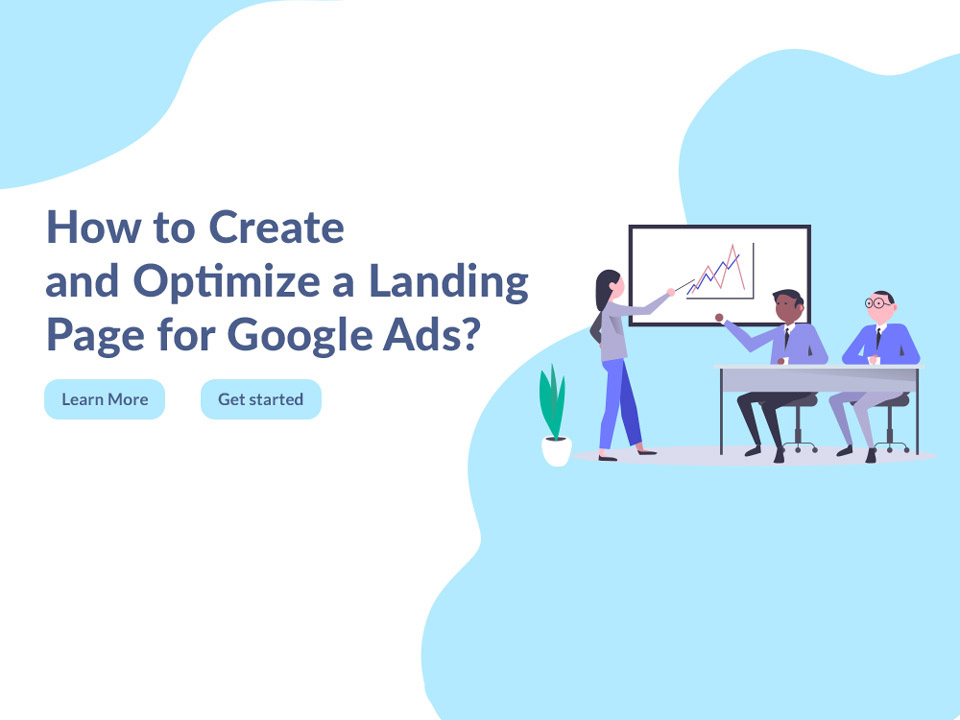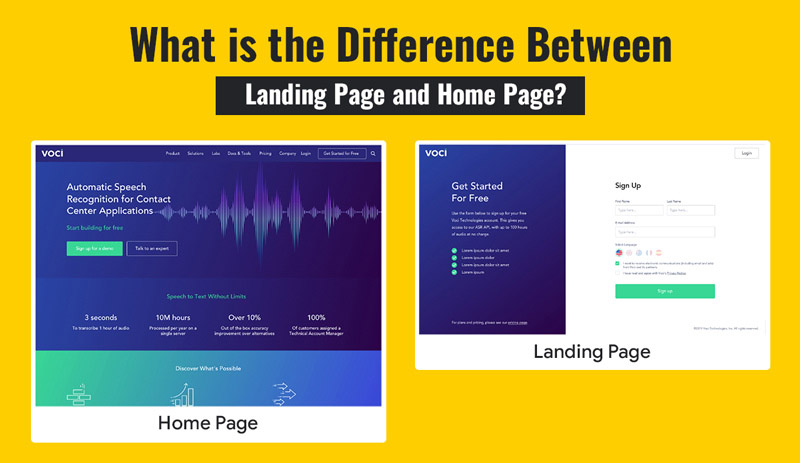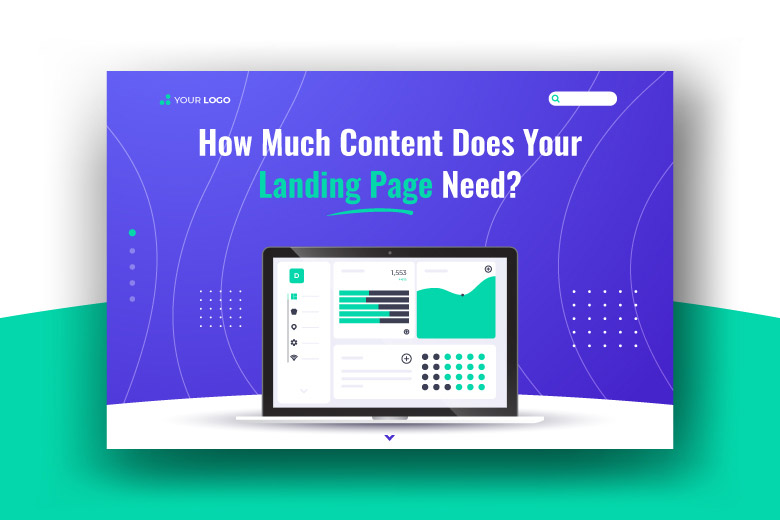
How to Create and Optimize a Landing Page for Google Ads?
A landing page is a key element of any effective Google Ads campaign. It’s the first page that potential customers see when they click on your ad, so it’s important to make sure that your landing page is well-designed and relevant to what you’re advertising.
In this article, we’ll give you some tips on how to create and optimize a landing page for your Google Ads campaign.
What is a Landing Page?
A landing page is the first page that a visitor sees when they click on your ad. It’s important to design your landing page in a way that is relevant to your ad and what you’re trying to promote.
For example, if you’re running a campaign for a new product, you’ll want to make sure that your landing page includes information about that product.
Your landing page should also be designed to encourage visitors to take a specific action, such as making a purchase or signing up for a newsletter. To do this, you’ll need to include a strong call-to-action (CTA) on your landing page.
What is the Difference Between Landing Page and Home Page?

A home page is the main page of a website, while a landing page is a specific page designed to promote a product or service. Landing pages are generally standalone pages that are not linked to the rest of the website.
They are typically used in online advertising campaigns and are designed to funnel users to a specific offer or call to action.
Home pages usually provide an overview of a website and its main sections. They typically include links to the other pages on the website. In contrast, landing pages are designed to promote a specific product or service and are not usually linked to other pages on the website.
Both home pages and landing pages can effectively drive users to take action. However, landing pages are usually more effective for online advertising campaigns as they are designed specifically.
Landing pages are standalone pages not linked to the rest of the website. They are typically used in online advertising campaigns and are designed to funnel users to a specific offer or call to action. Landing pages are more effective for online advertising campaigns as they are designed specifically.
Creating a Landing Page
There are a few things to keep in mind when creating your landing page. First, you’ll want to ensure that your page is relevant to your ad and includes the keywords you’re targeting.
You’ll also want to include a strong CTA and clear and concise copy that explains what your product or service is and why it’s valuable.
It’s also essential to include social proof on your landing page, such as customer testimonials or reviews. This will help build trust with potential customers and show them that others have had positive experiences with your product or service.
Finally, you’ll want to make sure that your landing page is mobile-friendly. With more and more people using mobile devices to browse the web, it’s essential to make sure that your site is designed for mobile viewers. This means having a responsive design that adjusts to different screen sizes and includes larger font sizes and buttons that are easy to tap on a touchscreen.
Optimizing Your Landing Page
Once you’ve created your landing page, you’ll want to optimize it for conversion. This means testing different elements of your page to see what works best.
One way to do this is to A/B test your landing page. This involves creating two page versions and then sending half of your traffic to each performance. You can then track the conversion rate for each page and see which one performs better.
You can also use heat mapping tools to see where users are clicking on your page. This can help you to optimize your page layout and make sure that your CTA is in a prominent location.
Finally, you’ll want to make sure that your landing page loads quickly. Studies have shown that a slow loading page can decrease conversion rates, so it’s important to test your page speed and make sure that it’s up to par.
Building a high-converting landing page isn’t easy. It takes a lot of time, effort, and testing to get it right. But once you do, the payoff can be huge.
Here are some tips to help you create and optimize a landing page for your Google Ads campaign:
1. Keep Your Landing Page Relevant to Your Ad.
Make sure that your landing page includes the keywords you’re targeting and is relevant to the product or service you’re promoting.
2. Include a Strong Call to Action.
Your landing page should have a clear and concise call-to-action that encourages visitors to take a specific action, such as making a purchase or signing up for a newsletter.
3. Use Clear and Concise Copy.
Explain what your product or service is and why it’s valuable using clear and concise copy on your landing page.
4. Include Social Proof.
Include customer testimonials, reviews, or other forms of social proof on your landing page to build trust with potential customers.
5. Make Sure Your Landing Page is Mobile-Friendly.
With more and more people using mobile devices to browse the web, it’s essential to make sure that your site is designed for mobile viewers. This means having a responsive design that adjusts to different screen sizes and includes larger font sizes and buttons that are easy to tap on a touchscreen.
6. Optimize Your Landing Page for Conversion.
Test different page elements to see what works best using A/B testing or heat mapping tools. Also, make sure that your landing page loads quickly to decrease the bounce rate and increase the conversion rate.
By following these tips, you can create an effective landing page that will help you achieve your desired results.
How does Google Determine the Landing Page Experience?
Google determines the landing page experience based on several factors, including relevance, transparency, and navigation. Relevance means that the ad is relevant to the keywords used to trigger it.
Transparency means that users understand what they will find on the landing page. Navigation implies that the user can easily find what they are looking for on the landing page.
Google also looks at the overall design of the landing page and how user-friendly it is. All of these factors contribute to the overall landing page experience.
To improve your landing page experience, you should ensure that your ad is relevant to the keywords you’re targeting, that your page is transparent and easy to navigate, and that your overall design is user-friendly.
By improving these factors, you can improve your chances of getting a high-quality score from Google.
How Much Content Does Your Landing Page Need?

The amount of content on your landing page will depend on several factors, such as the product or service you’re promoting and the page’s purpose.
Generally speaking, you should include enough content to explain what you’re offering and persuade users to take action. However, you don’t want to have so much content that the page becomes cluttered or confusing.
When creating your landing page, it’s essential to balance too much and too little content. Too much content can be overwhelming for users, while too little content may not provide enough information. It’s essential to find a middle ground that provides enough information to persuade users to take action without being overwhelming.
Additionally, the content on your landing page should be well-written and persuasive. The text should be clear and easy to read, and it should convince users to take the desired action. Be sure to proofread your content before publishing it, and consider having someone else review it.
Include enough content to explain what you’re offering and persuade users to take action, but don’t include so much that the page becomes cluttered or confusing. Use persuasive, well-written content that is easy to read and convinces users to take the desired action.
What are Some Common Landing Page Mistakes?
Some common mistakes that people make when creating landing pages include not including a call to action, using irrelevant or confusing content, and making the page too long. Additionally, it’s important to make sure that your landing page is mobile-friendly and that it loads quickly.
Another common mistake is to include too many links on the landing page, which can distract users from the main call to action. It’s also important to avoid using pop-ups on landing pages, as they can be annoying and interfere with the user experience.
Conclusion
Overall, it’s important to create a landing page that is relevant to the keywords you’re targeting, easy to navigate, and user-friendly. Additionally, your landing page should have enough content to explain what you’re offering and persuade users to take action.
However, you don’t want to include so much content that the page becomes cluttered or confusing. Finding a balance is key to creating an effective landing page. If you have any questions feel free to ask below the comment section.


